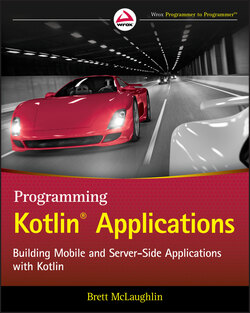Читать книгу Programming Kotlin Applications - Бретт Мак-Лахлин, Brett McLaughlin - Страница 32
CREATING USEFUL OBJECTS
ОглавлениеWith a working Kotlin environment, it's time to go make that Person class from Listing 1.2 something less vacuous. As mentioned earlier, objects should model real-world objects. Specifically, if an object represents a “thing” in the world (or in formal circles you'll sometimes hear that objects are “nouns”), then it should have the properties or attributes of that thing, too.
A person's most fundamental property is their name, specifically a first name and last name (or surname, if you like). These can be represented as properties of the object. Additionally, these are required properties; you really don't want to create a person without a first and last name.
For required properties, it's best to require those properties when creating a new instance of an object. An instance is just a specific version of the object; so you might have multiple instances of the Person class, each one representing a different actual person.
WARNING As you may already be figuring out, there's a lot of technical vocabulary associated with classes. Unfortunately, it will get worse before it gets better: instances and instantiation and constructors and more. Don't get too worried about catching everything right away; just keep going, and you'll find that the vocabulary becomes second nature faster than you think. In Chapter 3, you'll dive in deeper, and in fact, you'll keep revisiting and growing your class knowledge throughout the entire book.
